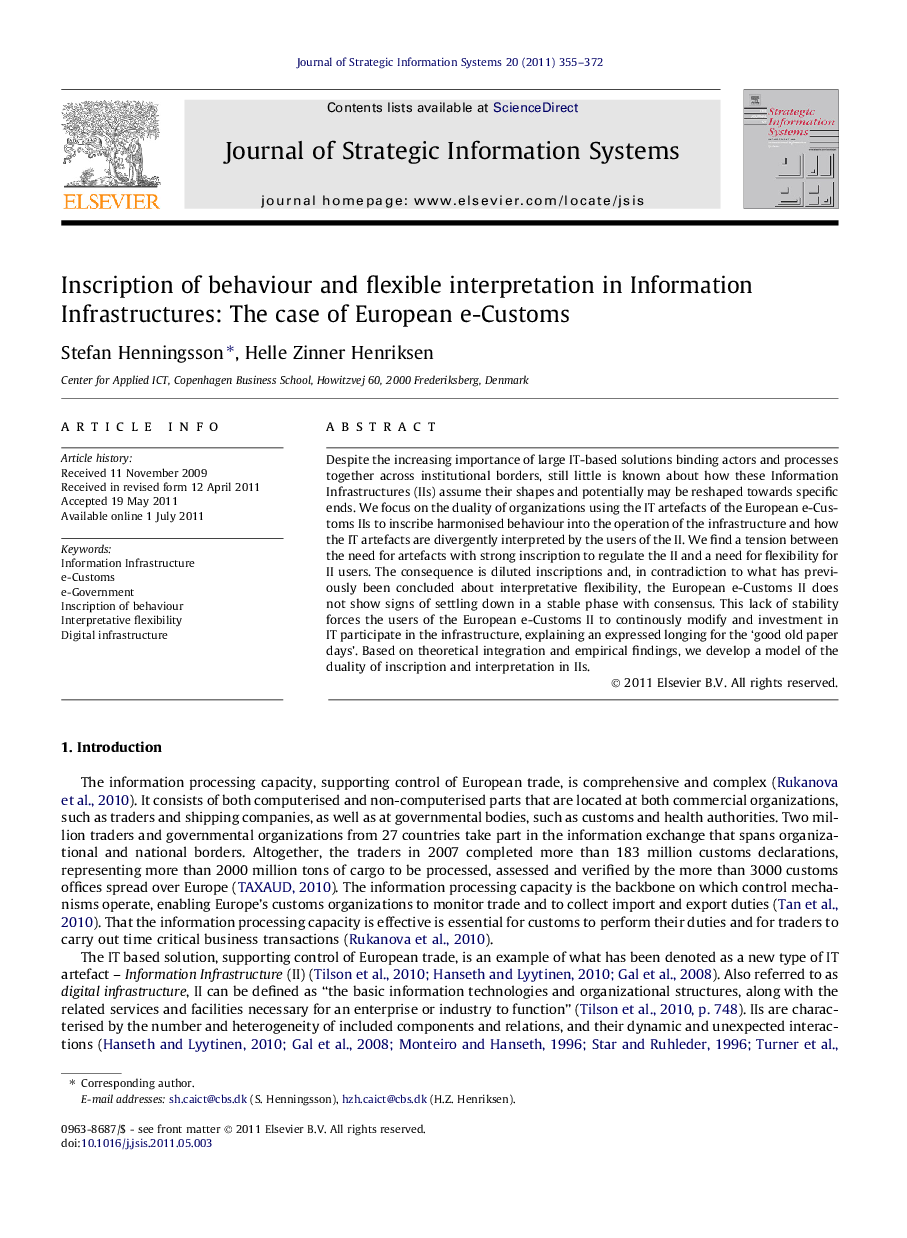| Article ID | Journal | Published Year | Pages | File Type |
|---|---|---|---|---|
| 557832 | The Journal of Strategic Information Systems | 2011 | 18 Pages |
Despite the increasing importance of large IT-based solutions binding actors and processes together across institutional borders, still little is known about how these Information Infrastructures (IIs) assume their shapes and potentially may be reshaped towards specific ends. We focus on the duality of organizations using the IT artefacts of the European e-Customs IIs to inscribe harmonised behaviour into the operation of the infrastructure and how the IT artefacts are divergently interpreted by the users of the II. We find a tension between the need for artefacts with strong inscription to regulate the II and a need for flexibility for II users. The consequence is diluted inscriptions and, in contradiction to what has previously been concluded about interpretative flexibility, the European e-Customs II does not show signs of settling down in a stable phase with consensus. This lack of stability forces the users of the European e-Customs II to continously modify and investment in IT participate in the infrastructure, explaining an expressed longing for the ‘good old paper days’. Based on theoretical integration and empirical findings, we develop a model of the duality of inscription and interpretation in IIs.
► IT artefacts of Information Infrastructures (IIs) can to different degrees carry behavioural inscriptions that regulates the use of infrastructures. ► The dilemma of behavior inscription in II: strong inscriptions may be required, but strong inscriptions are more difficult to accommodate. ► Continuous interpretative flexibility, rather than settling down in a stabilization phase, seems to be the destiny for large II. ► Inscription and interpretation processes must be regarded as a duality to understand success in behavoural inscriptions into II.
